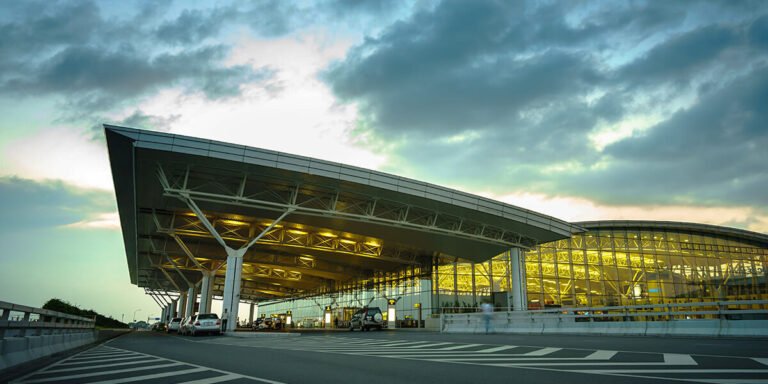Noi Bai Airport is Vietnam’s second busiest airport and a crucial gateway for travelers visiting the country’s northern region. Located about 27 kilometers north of Hanoi, the capital city of Vietnam, Noi Bai International Airport handles millions of passengers each year and plays an essential role in both domestic and international air travel. Managed by the Airports Corporation of Vietnam, this airport has grown rapidly alongside Vietnam’s expanding tourism industry and increasing demand for air transportation.
Noi Bai Airport consists of two main terminals, each serving different types of flights. Terminal 1 primarily handles domestic flights connecting Hanoi with other cities such as Ho Chi Minh City, Da Nang, and Phu Quoc. It is the hub for domestic airlines including Vietnam Airlines, Vietjet Air, and Bamboo Airways. Terminal 2 serves international flights and offers modern facilities for travelers. Opened in 2015, this terminal is equipped with a variety of amenities like duty-free shops, restaurants, and comfortable lounges. It hosts major international airlines flying to and from key destinations including Seoul, Tokyo, Bangkok, Singapore, and Doha. The presence of these international routes makes Noi Bai Airport an important hub for travelers from Southeast Asia, East Asia, and beyond.
Passenger traffic at Noi Bai Airport continues to grow each year. The airport has the capacity to handle more than 25 million passengers annually. During peak travel periods such as the Reunification Day holiday, the airport experiences a significant rise in passenger numbers. According to recent reports, on the busiest days, Noi Bai Airport handles up to 370 domestic flights and serves around 68,000 passengers. This busy schedule reflects the increasing demand for both leisure and business travel to northern Vietnam.
One of the recent developments at Noi Bai Airport is the introduction of a biometric identification system designed to improve efficiency and reduce waiting times. This new technology uses the VNeID mobile app to allow travelers to speed up check-in and security processes. The system aims to ease congestion, especially during busy periods, and enhance the overall passenger experience. As Vietnam continues to modernize its airport infrastructure, innovations like biometric verification are helping Noi Bai keep pace with global aviation standards.
Noi Bai Airport’s location offers convenient access to Hanoi and the surrounding areas. The airport is approximately 45 to 60 minutes by car from downtown Hanoi. New expressways and improved transportation links have made the journey faster and more comfortable for passengers. Various transportation options are available, including taxis, airport buses, and popular ride-hailing services like Grab and Gojek, making it easy for travelers to reach their destinations after arriving at the airport.
The airport plays a key role in Vietnam’s domestic flight network. The Hanoi to Ho Chi Minh City route is one of the busiest air routes in the world, and many flights operate daily between the two cities. Noi Bai supports this busy corridor with frequent connections, serving both business travelers and tourists. Additionally, the airport connects Hanoi to other important domestic destinations like Da Nang, Nha Trang (Cam Ranh), and Hue, facilitating travel within the country.
On the international front, Noi Bai Airport links Vietnam with many major cities in Asia and beyond. Popular international destinations include Seoul, Tokyo, Bangkok, Singapore, Kuala Lumpur, Taipei, Frankfurt, and Doha. This wide network makes the airport a vital link in global travel for both Vietnamese citizens and international visitors. Airlines operating at Noi Bai include well-known carriers such as Korean Air, Japan Airlines, Qatar Airways, and Singapore Airlines, along with Vietnam’s own Vietnam Airlines.
Noi Bai Airport is not only important for tourism but also for government and diplomatic travel. Being the main airport serving the capital city, it handles many official flights and supports diplomatic missions based in Hanoi. The airport is also a critical component of Vietnam’s plans to expand its aviation sector. As the country seeks to become a regional air travel hub, investments in facilities and technology at Noi Bai are vital to meeting future demand.
The airport continues to evolve as Vietnam’s tourism and economic growth create new opportunities and challenges. With ongoing improvements in infrastructure and technology, Noi Bai Airport is well-positioned to support the increasing flow of passengers and to maintain its role as a gateway to northern Vietnam. Travelers passing through the airport can expect a blend of modern amenities, expanding flight options, and convenient access to Hanoi and the surrounding region.







